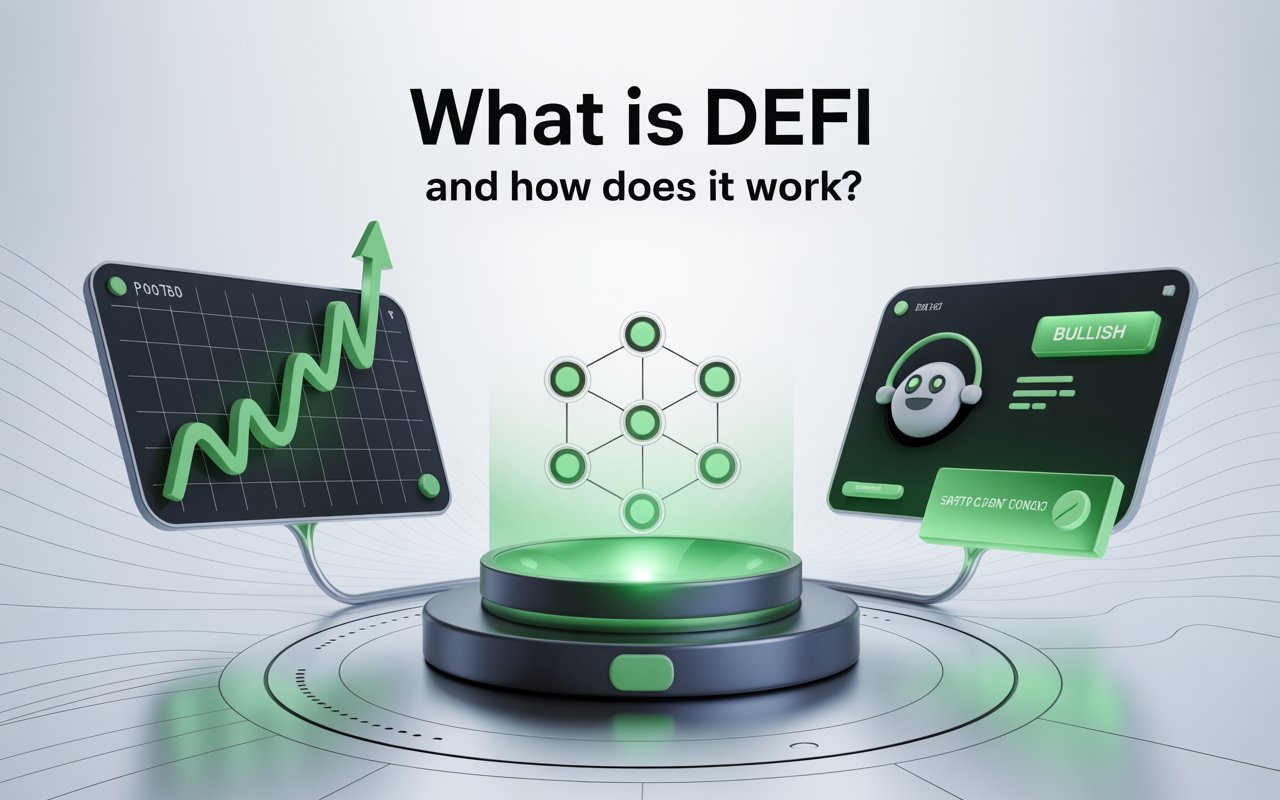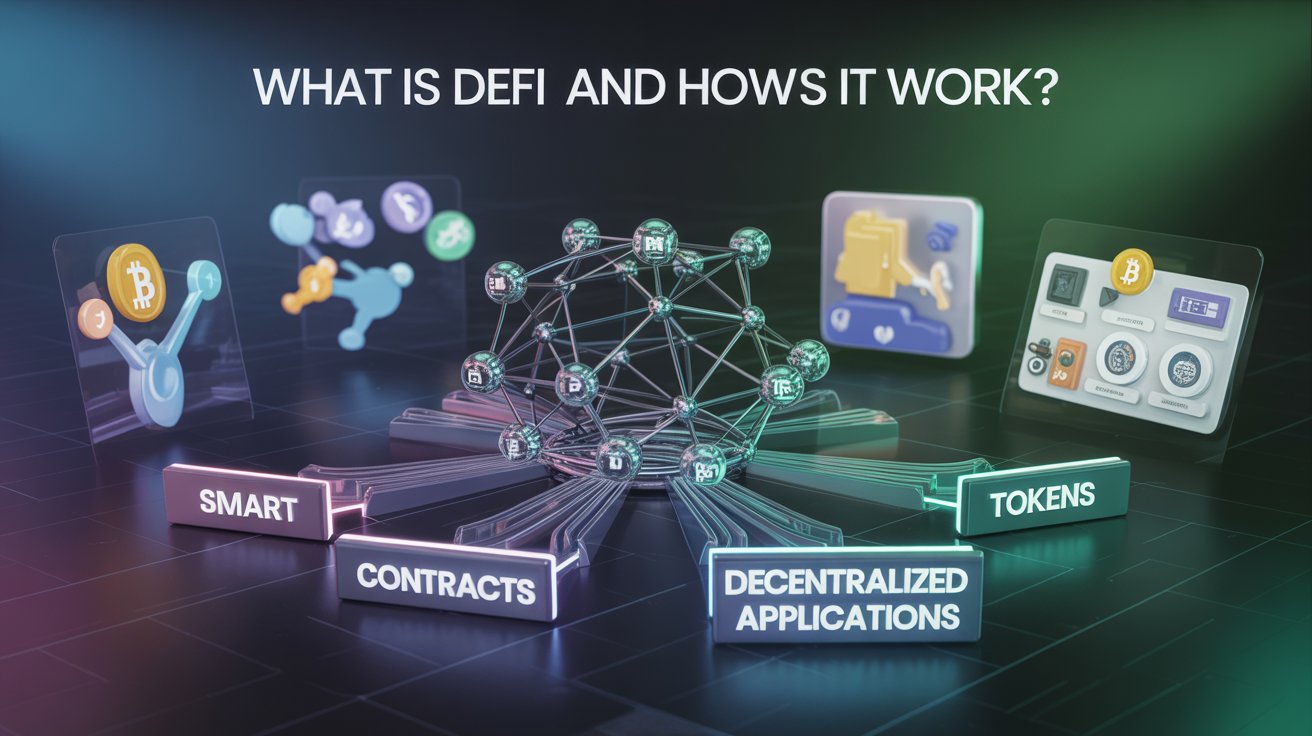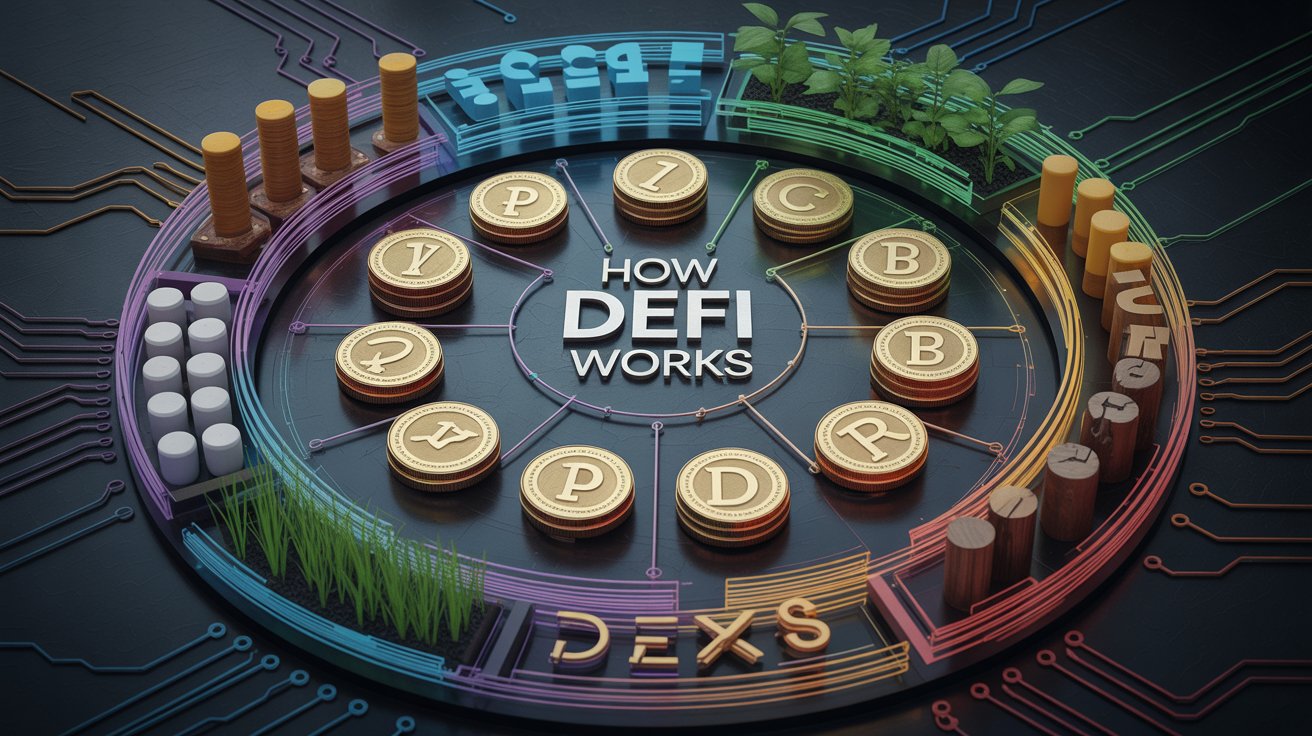Introduction
Decentralized Finance (DeFi) is revolutionizing the financial world, offering innovative ways for individuals to access banking, lending, and trading services without traditional intermediaries. Understanding What Is DeFi and How Does It Work? is essential for anyone exploring modern financial solutions, digital assets, or blockchain-based investments. In this guide, we will explain the core components, benefits, and potential risks of DeFi, providing clarity on What Is DeFi and How Does It Work? And why it is rapidly transforming the global financial ecosystem.
By the end, you will have a clear understanding of What Is DeFi and How Does It Work? How it differs from conventional finance, and how you can leverage DeFi for smarter financial decisions.
Understanding DeFi
At its core, DeFi is a financial ecosystem built on decentralized networks, primarily Ethereum, that allows users to lend, borrow, trade, and invest without relying on centralized authorities. The key components of DeFi include:
- Smart Contracts: Self-executing contracts coded on the blockchain that enforce rules automatically.
- Decentralized Applications (dApps): Applications built on blockchain networks enabling financial operations directly between users.
- Tokens and Stablecoins: Digital assets representing value or currency in the DeFi ecosystem.
DeFi eliminates intermediaries, reduces fees, and increases accessibility, allowing global participation in financial activities previously limited to traditional banking systems.
How DeFi Works
DeFi platforms use blockchain technology and smart contracts to replicate financial services digitally. Here’s a breakdown:
- Lending and Borrowing: Users have the option to lend crypto currencies to gain interest or to borrow assets by putting up collateral. Smart contracts automatically handle interest rates, repayments, and collateral management.
- Decentralized Exchanges (DEXs): Platforms like Uniswap or SushiSwap allow users to trade cryptocurrencies directly without centralized control. Liquidity pools enable smooth trading by pooling users’ assets.
- Yield Farming and Staking: Users can stake tokens or provide liquidity to earn rewards. Smart contracts calculate returns automatically, ensuring transparent distribution.
- Synthetic Assets: DeFi enables the creation of synthetic assets, which are digital representations of real-world assets like stocks or commodities, enabling more diverse trading opportunities.
Advantages of DeFi
DeFi offers several benefits compared to traditional finance:
- Accessibility: Anyone with an internet connection can participate.
- Transparency: Every transaction is kept on the block chain for everyone to see.
- Lower Costs: No intermediaries reduce fees and operational costs.
- Programmable Money: Smart contracts enable automation and complex financial operations.
Risks and Challenges
Despite its potential, DeFi comes with risks:
- Smart Contract Vulnerabilities: Bugs in code can lead to losses.
- Regulatory Uncertainty: Governments are still defining regulations for DeFi.
- Market Volatility: Cryptocurrency price fluctuations can affect loans, staking, and liquidity.
- Scams and Fraud: Unverified projects may pose risks to investors.
Popular DeFi Platforms
Platform |
Functionality |
Network |
| Uniswap | Decentralized exchange (DEX) | Ethereum |
| Aave | Lending and borrowing | Ethereum |
| Compound | Interest-earning platform | Ethereum |
| MakerDAO | Stablecoin issuance (DAI) | Ethereum |
| Curve Finance | Stablecoin trading | Ethereum |
AI Tools for Exploring DeFi
To understand and manage DeFi effectively, several AI-powered tools can help:
- Crypto Portfolio Trackers: Use AI to analyze portfolio performance and risk.
- Market Sentiment Analysis: AI monitors social media, news, and trading trends to predict market movements.
- Smart Contract Auditing Tools: AI assists in identifying vulnerabilities in DeFi contracts.
- Chatbots for DeFi Guidance: AI chatbots provide real-time assistance and explanations of DeFi protocols.
Conclusion
DeFi is transforming the way we access financial services by eliminating intermediaries and introducing transparency, automation, and global accessibility. While the opportunities are vast, it is crucial to understand the risks and approach the ecosystem with caution. With AI tools enhancing research, analysis, and management, navigating DeFi has become more efficient for both beginners and seasoned investors.
FAQs
What is the difference between DeFi and traditional finance?
DeFi eliminates intermediaries and relies on blockchain and smart contracts, while traditional finance relies on centralized institutions like banks.
How can I start using DeFi?
You need a crypto wallet, some cryptocurrency, and access to a DeFi platform. Popular wallets include MetaMask and Trust Wallet.
Can DeFi work with traditional currencies?
Indirectly, yes. Stablecoins like USDC or DAI are pegged to traditional currencies and can be used in DeFi platforms.





